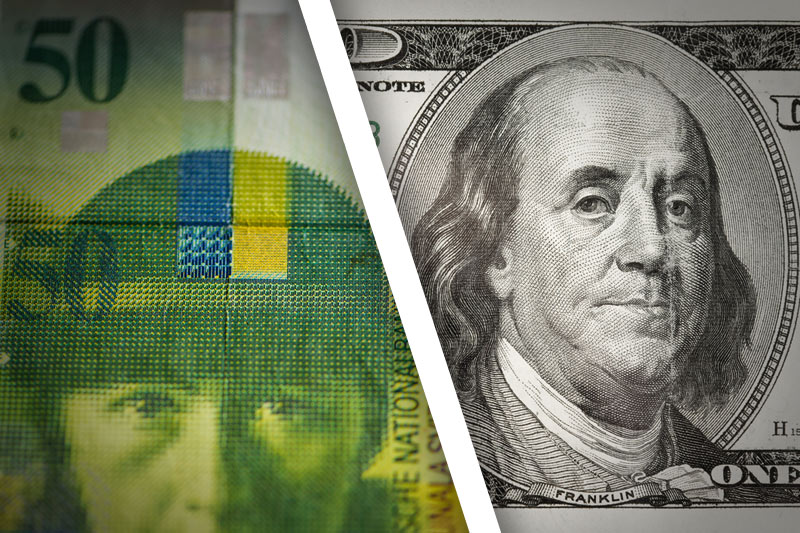Dollar steadies after sharp losses; Swiss franc slumps on rate cut By Investing.com


Investing.com – The U.S. dollar rose marginally in European trade Thursday, rebounding after the previous session’s sharp losses after the Federal Reserve maintained its projections for interest rate cuts this year, while the Swiss franc slumped after a surprise cut by the Swiss National Bank.
At 04:20 ET (09:20 GMT), the Dollar Index, which tracks the greenback against a basket of six other currencies, traded marginally higher at 103.065, after having fallen more than 0.5% on Wednesday.
Fed sticks with three rate cuts this year
The kept interest rates unchanged on Wednesday, as widely expected, but also stayed on track for three rate cuts this year, even though it projected slightly slower progress on inflation.
Sticky inflation readings had prompted fears that the Fed officials would rein in projections for rate cuts this year, but the central bank didn’t strike a more hawkish tone, which sent the greenback tumbling.
Traders were now pricing in an over 70% chance the Fed will cut rates by 25 bps in June, according to the CME Fedwatch tool.
The Fed is unlikely to delay rate cuts for an extended period and are planning the first reduction at the June meeting, according to Goldman Sachs (NYSE:) analysts, in a note.
“We continue to expect cuts in June, September, and December, for a total of 3 cuts in 2024,” they added.
Swiss franc slumps after rate cut
In Europe, rose 0.9% to 0.8945 after the surprised the market, cutting its benchmark interest rate by 25 basis points to 1.5%, becoming the first major central bank to cut interest rates in this cycle.
The step comes after Swiss inflation dipped to 1.2% in February, the ninth month in succession that price rises have been within the SNB’s 0-2% target range, and is likely aimed at curtailing the recent appreciation of the Swiss franc.
SNB chief Thomas Jordan suggested, at Davos, that the franc’s recent appreciation was posing challenges for exporters, and this move is likely designed to weaken the currency.
fell 0.1% to 10.5484 after kept its benchmark interest rate unchanged at 4.50% on Thursday, as unanimously expected by analysts.
fell 0.1% to 1.2776 ahead of the Bank of England’s policy-setting meeting later in the session.
The is widely expected to keep interest rates unchanged, but U.K. inflation slowed in February – dropping to 3.4% in annual terms after a 4.0% increase in January, the weakest rate of inflation since September 2021 – suggesting the central bank could start cutting interest rates in the months ahead.
traded 0.1% higher to 1.0920, after notching a one-week high against the dollar earlier in the session.
The European Central Bank has tried to dampen speculation on a streak of interest rate cuts, with President saying on Wednesday that the ECB could not commit to a certain number of rate cuts even after it starts reducing borrowing costs.
Yen bounces from a four-month low
traded 0.2% lower to 150.99, falling from a four-month high with the prospect of U.S. interest rate cuts and a more hawkish Bank of Japan boding well for the yen, which was battered by rising U.S. interest rates over the past year.
Purchasing managers index data for March showed some resilience in the Japanese economy, with activity shrinking less than expected, while the sector grew further.
rose 0.4% to 0.6613, with the gains fueled chiefly by a substantially stronger-than-expected reading on the labor market, which also showed unemployment falling to a six-month low.


